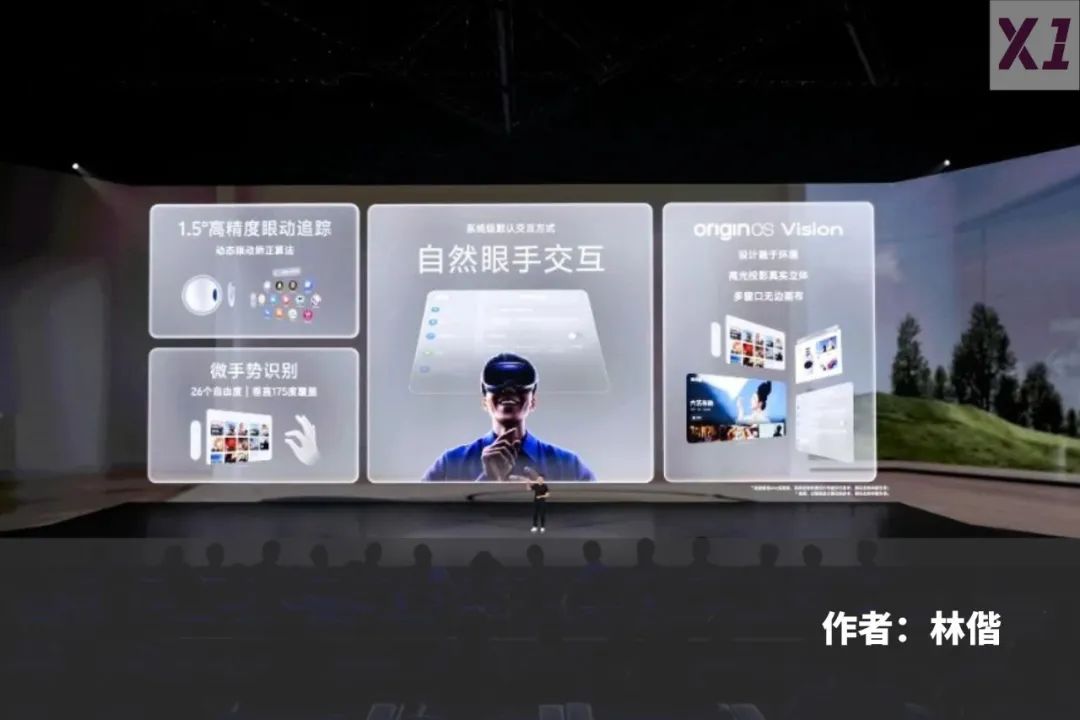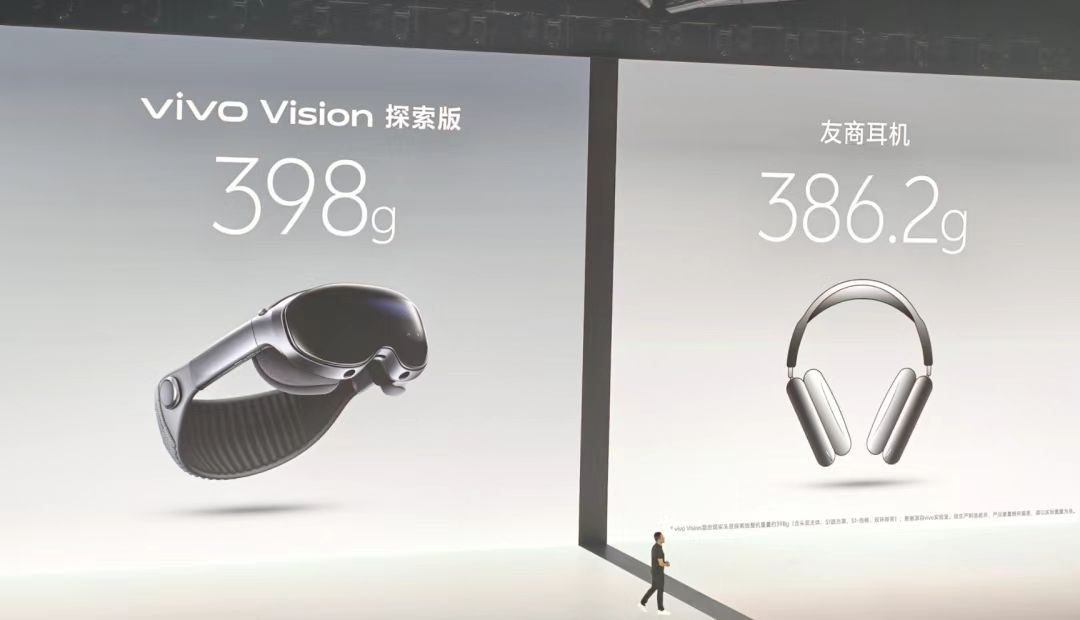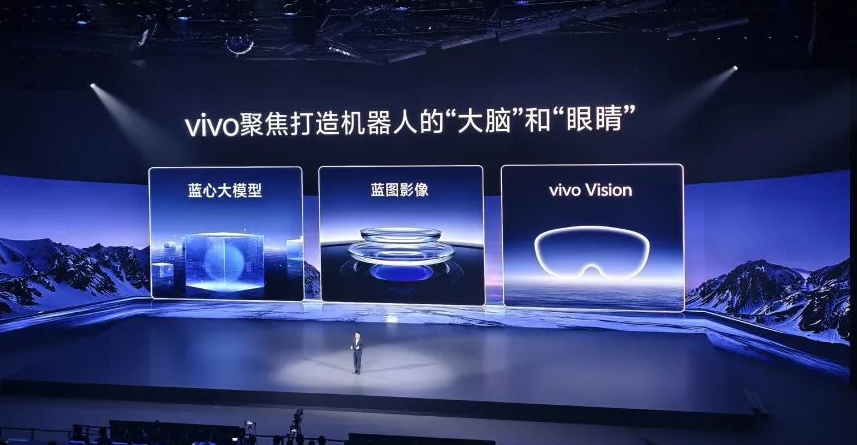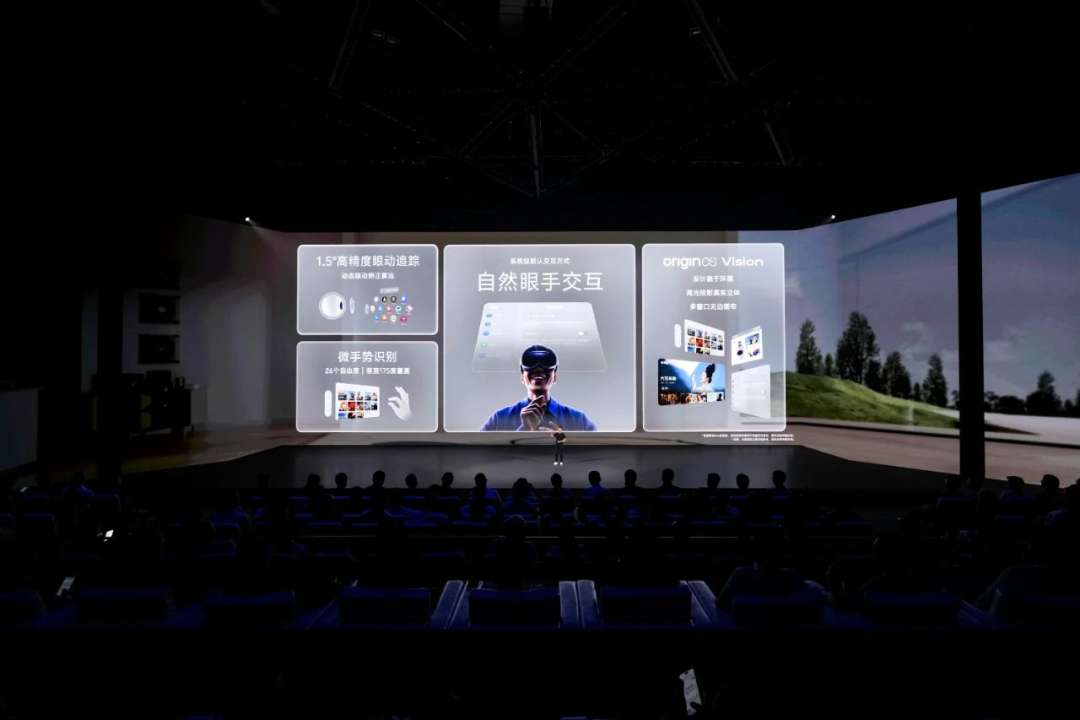What Signals Does vivo's Entry into MR Convey?
![]() 08/27 2025
08/27 2025
![]() 500
500

[Abstract] On August 21, vivo unveiled the vivo Vision, marking a significant stride in the MR (Mixed Reality) realm.
This move transcends mere hardware launch; it signifies a pivotal step in vivo's quest to forge a tripartite ecosystem encompassing "mobile phones, MR, and robots." Leveraging its deep-rooted expertise in imaging and AI, coupled with a steadfast team and a clear strategic focus, vivo is evolving into an enterprise dedicated to serving family-centric scenarios, heralding a monumental shift in its corporate identity.
Furthermore, the home robot sector is a marathon that demands long-term commitment. The industry yearns for companies that can incrementally breakthrough, deliver tangible results, and foster a virtuous cycle of technology, product, and scenario integration.
Below is the main text:
"I've observed that many successful enterprises are followers, not pioneers. Our approach involves first scrutinizing the market and competitors before product development. When we feel confident and capable of outperforming competitors, we enter the market, striving for excellence, establishing brand recognition, and securing market share."
This excerpt from vivo's early internal training materials encapsulates its core philosophy: "Dare to be last, yet strive to excel among latecomers."
On August 21, as vivo chose to introduce the MR headset vivo Vision, it was evident that the company's strategic pace had suddenly accelerated.
Amidst fierce industry competition spanning chipmaking, AI, and robotics, vivo, though not a pioneer in these fields, consistently introduces innovative concepts.
This official foray into MR also heralds a new chapter for vivo within the integrated ecosystem of mobile phones, AI, and robots.
Solving What Problems
AI's multi-dimensional reshaping of software and hardware products is not a whim. Apple has set a precedent, and domestic "AI + hardware" combinations, while receiving mixed reviews, have generally encountered both acclaim and challenges.
At a stage where standards are nascent, pinpointing the absolute core of products like MR/AR/VR may be elusive, but one prerequisite is clear: meeting user needs. This is also the hallmark of vivo Vision.
In terms of product capability, Apple, as a precursor, polished the Vision Pro to its utmost potential. However, due to Apple's inherent traits and the technological stage at launch, Vision Pro swiftly revealed two critical issues: portability and ecosystem.
Weighing 600g at launch, Vision Pro was colloquially likened to carrying a pomelo, leading many reviewers to conclude it was uncomfortable for prolonged use. In contrast, vivo Vision weighs 398g, akin to holding a mango, with the weight reduced to two-thirds.

While this may seem a mere reduction in weight, it addresses numerous issues associated with heavy headsets, including comfort, wear duration, and portability. These factors largely determine whether MR headsets can be embraced and genuinely utilized by the public. Coupled with vivo Vision's price being just one-third of Apple's, its advantages become even more pronounced. These two features initially address accessibility issues.
Next is Apple's perennial challenge: ecosystem. Apple's officially touted selling point of "immersive content" is still being "squeezed out like toothpaste." Immersive content production is costly and requires substantial resource investment. Thus, Apple intends to gradually release this content to avoid rapid depletion. However, the market lacks patience, and Apple itself is seeking solutions.
vivo Vision addresses this issue. Unlike Apple, which is still seeking developers for its content ecosystem, vivo, as a mobile phone manufacturer inherently possessing an ecosystem, can create content sources that are more life-like and hold significant personal emotional value for users by integrating its mobile phones and headsets. This resolves the practicality of the product ecosystem. These two points represent making the right innovations along the path paved by predecessors.
Notably, vivo's choice of MR also stems from its ability to resist the allure of AR/VR products.
Initially popular but subsequently cooling, Vision Pro spurred the rise of AR/VR as an alternative, with AI glasses being particularly representative. However, currently available products on the market primarily offer functions such as photography, videography, calling, music listening, and AI Q&A.
While they exude a sense of technology, they lack practicality, contributing to the fluctuating sales of AR/VR products from some leading companies. This instability naturally hinders companies from maintaining sufficient internal confidence.
For example, ByteDance's PICO has been awaiting an explosion in industry demand but has faced business contraction, staff reductions, and decreased priority since 2023, stating it will "focus on long-term exploration and breakthroughs in hardware and core technologies" amidst ongoing business adjustments.
After reviewing peers' experiences, vivo neither clung to Apple's path of market education nor settled for the simpler option of AI glasses. Instead, it introduced MR products with an improved approach, which is commendable.
As early as 2024, Hu Baishan revealed that "the next generation of mobile phone-like products will be MR, and vivo has already begun its layout, with plans to unveil an MR prototype on the occasion of vivo's upcoming 30th anniversary." This indirectly proves that vivo has long been planning whether and how to persist in making MR, and this product launch was well-prepared.
A Fuller Story
Historically, groundbreaking technological products share a commonality: they seamlessly bridge the virtual and real worlds. In the 1980s, television's popularity transformed a generation's lifestyle, while the smartphone wave initiated by iPhone 4 democratized internet access.
Today, whether it's the reality of the smartphone industry entering a phase of stock competition or the broader possibilities for technological development to innovate electronic products, both point towards products that further explore the nexus between the physical and digital worlds. This is vivo's strategic mission.
Thus, when vivo established its Robotics Lab in March this year, it calmly focused on home robots with a clear objective.
This concept diverges from structured scenario robots, currently favored by manufacturers. vivo believes that "home robots" represent an "unstructured scenario," whereas "highly structured scenario" robots already have numerous deeply engaged players, such as industrial and cleaning robots.
The home robot sector harbors numerous unresolved pain points. Therefore, vivo's transition from MR to home robots is the right move for the next decade, further extending its mobile phone-centric efforts.
Hu Baishan contends that "brain + eyes" are crucial for solving home robots: "eyes" scan changing environments in real-time, while the "brain" issues action instructions through cognitive strategies and thinking. MR devices serve as vital "eyes and brain," resolving spatial perception and decision-making via MR headsets and completing physical interactions with home robot limbs, forming a complete "digital perception - physical execution" chain for home robots.

Combining vivo's existing imaging and mobile phone AI capabilities, its MR products have deep roots. MR products garner data ecosystem support from the mobile phone business and, in turn, refine mobile phone products. This is the "mobile phone + MR + robot" ecosystem vivo aims to build. Together, they constitute the ultimate layout for household electronic technology products and vivo's true competitive advantage.
Internal Cultivation First
Amidst the AI craze, leading companies' forays into MR are not uncommon. What vivo Vision truly conveys to the industry is how to ground strategies without wavering or stagnation.
Observing vivo's recent actions reveals it has consistently grown within its "circle of competence," with MR and robotics leveraging vivo's accumulated capabilities over the years, without pursuing beyond its reach.
For instance, "Blue Technology" is vivo's umbrella term for its self-developed technology system, proposed since late 2023, encompassing key areas like self-developed chips, AI, and imaging algorithms. This signifies that "Blue Technology's" scope extends far beyond mobile phones, reflecting vivo's early layout in intelligent manufacturing.
Immediately after the 2025 Annual Conference of the Boao Forum for Asia, vivo officially announced the establishment of its Robotics Lab, formally entering the robotics industry, marking a further step based on its existing technological foundations.
Notably, throughout this strategy's execution, vivo's core technical team has remained remarkably stable, with no departures for entrepreneurship or management changes. President Shen Wei, while low-key, frequently emphasizes vivo's core strategy at annual meetings. vivo's hallmark is its commitment; once it starts, it does not waver, a rarity among peers.
Moreover, MR and home robots inevitably involve the content ecosystem, which vivo has long been cultivating on mobile phones. Building MR and robot sections on the mobile phone ecosystem is a strategic execution method enhancing product performance based on existing AI capabilities, warranting calm reflection within the industry.
As the most prominent feature of daily technology products, mobile phones are renowned for their convenience. Consequently, exceptional mobile phone manufacturers excel at making practical products, which is vivo's forte as the "Blue Factory."
For example, vivo has established a complete spatial imaging ecosystem, from high-quality creation to high-fidelity immersive playback, enabling hardware-level linkage from smartphones to MR headsets.

Additionally, spatial images captured by models like vivo X100 Ultra and vivo X200 Ultra can be seamlessly transmitted, with content instantly synchronized, significantly lowering the threshold for spatial content creation and increasing content supply. It will be fully integrated with vivo's mobile phone app store content library and account assets. Most applications downloadable, installable, and usable on vivo mobile phones do not require adaptation and can be immediately used on vivo Vision.
Leaving the content ecosystem to customers and reshaping MR products with mobile phone genes is an approach worth emulating by latecomers.
Epilogue
Adhering to doing the right things and doing them right has always been vivo's values. Among its various sector choices, vivo's strategy has consistently focused on the high-frequency needs of the broadest user base, a path it continues to tread in MR and home robots.
From landline phones to mobile phones and now to robots, vivo is evolving into an enterprise dedicated to serving family-centric scenarios, marking a significant leap in its corporate identity.
Furthermore, the home robot sector is a long-term endeavor, and the industry also needs companies that can incrementally breakthrough, deliver results, and foster a positive feedback loop of technology, product, and scenario integration.
- XINLIU -





